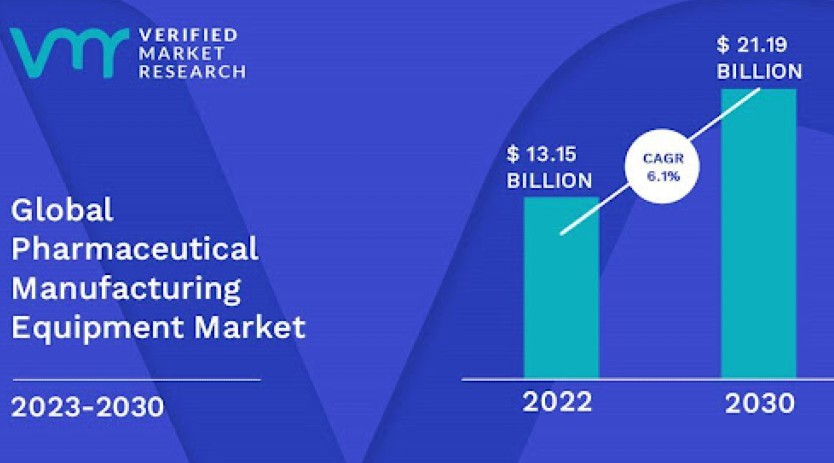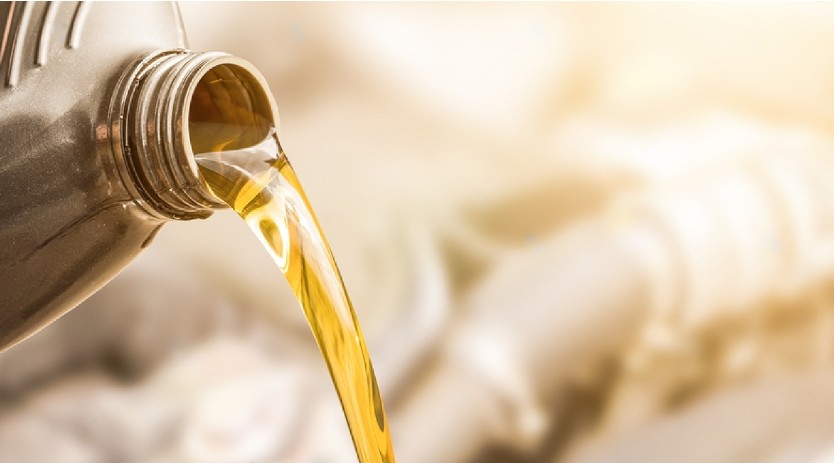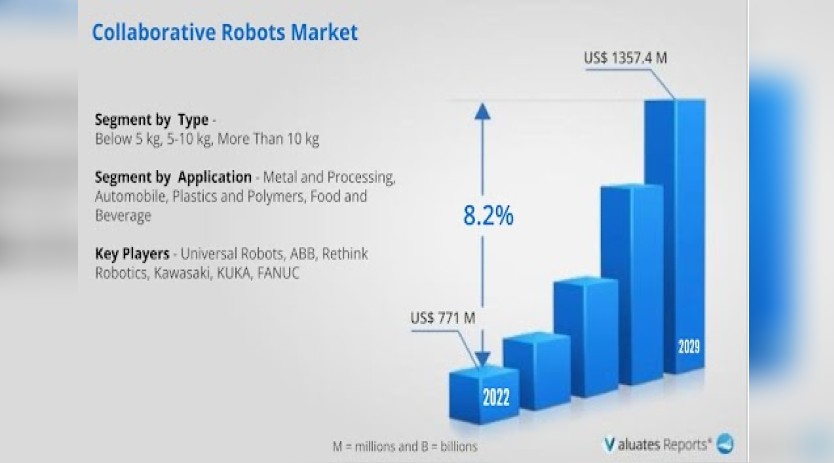Pharmaceutical Manufacturing Equipment Market size to reach CAGR of 6.1 percent
September 21, 2023 3:13 pm
Pharmaceutical Manufacturing Equipment Market size was valued at USD 13.15 Billion in the year 2022 and it is expected to reach USD 21.19 Billion in 2030, at a CAGR of 6.1% from 2023 to 2030.
The production and supply of machinery and equipment used in the manufacturing processes of pharmaceutical products are a part of the global pharmaceutical manufacturing equipment market. Increasing global demand for medicines, technological improvements, and the focus on quality control and regulatory compliance are some of the factors driving the industry. The Global Pharmaceutical Manufacturing Equipment Market report provides a holistic evaluation of the market. The report offers a comprehensive analysis of key segments, trends, drivers, restraints, competitive landscape, and factors that are playing a substantial role in the market.
Global Pharmaceutical Manufacturing Equipment Market Definition
The industry that creates and provides tools, equipment, and machinery utilized in the production of pharmaceutical products is termed the global pharmaceutical manufacturing equipment market. This market includes a wide range of machinery, such as tools for drug formulation, packing, labeling, quality control, and other crucial steps in the manufacture of pharmaceuticals. For pharmaceutical goods to be safe, effective, and of high quality, pharmaceutical production equipment is essential. The Food and Drug Administration (FDA) and the European Medicines Agency (EMA), among other regulatory authorities, have set strict rules and regulations for these types of equipment. A wide variety of pharmaceutical products, including tablets, capsules, injectables, liquids, creams, and ointments, are manufactured using them.
Several factors influence the pharmaceutical manufacturing equipment industry. Firstly, there is an increasing need for pharmaceutical products on a global scale, which is fueled by factors including population growth, rising healthcare costs, and the development of chronic diseases. Additionally, technological developments like automation, robotics, and digitalization have produced more advanced and precise machinery, which has further fueled market expansion. Furthermore, the increased focus on regulatory compliance and quality control has increased the demand for cutting-edge production machinery that can guarantee compliance and reduce the danger of contamination or errors.
Additionally, the market has grown as a result of the pharmaceutical industry’s expansion in emerging regions and the outsourcing of manufacturing tasks to contract manufacturing organizations (CMOs). Multinational firms and specialty manufacturers are significant market participants in equipment for pharmaceutical manufacturing. These businesses provide a wide range of products and services, including production tools, packaging tools, sterilization systems, and lab equipment. The market for pharmaceutical manufacturing equipment is expanding as more regulatory frameworks are being established globally to support drug innovation and safety, as well as due to rising generic drug demand, rising healthcare spending, and expanding demands for pharmaceutical manufacturing flexibility.
Global Pharmaceutical Manufacturing Equipment Market Overview
The Global Pharmaceutical Manufacturing Equipment Market is a booming market that is supported by a number of important aspects. The pharmaceutical industry’s key sector for the production of numerous pharmaceuticals, medicines, and healthcare items is the global market for pharmaceutical manufacturing equipment. The market’s growth and development are shaped by a number of drivers and restraints. The demand for pharmaceutical products is driven by the expanding world population, rising healthcare costs, and the development of chronic diseases. This demand has a direct bearing on the necessity for cutting-edge manufacturing machinery to meet the rising production demands. The production of pharmaceuticals has gone through a revolution because of ongoing technical improvements.
The efficiency, accuracy, and speed of manufacturing have all been improved through automation, robotics, and artificial intelligence (AI). Pharmaceutical businesses can optimize their manufacturing capacities and raise product quality by implementing cutting-edge equipment. The use of modern manufacturing technology is driven by the strict rules and quality requirements established by regulatory agencies like the FDA (Food and Drug Administration) and EMA (European Medicines Agency). Companies must abide by these rules in order to guarantee the security, effectiveness, and caliber of their goods, which increases investments in machinery that meets regulatory requirements. The need for effective manufacturing procedures is driven by the increased demand for pharmaceutical products that are affordable, particularly generic medications.
To address the rising demand for generic pharmaceuticals, pharmaceutical companies are investing in equipment that enables them to increase output, reduce manufacturing costs, and maintain high standards of quality. Contract manufacturing organizations (CMOs) and contract research organizations (CROs) are used by many pharmaceutical businesses to outsource their manufacturing operations. Due to CMOs and CROs’ growing investment in cutting-edge technology and machinery to meet the demands of numerous clients, this trend has raised the demand for manufacturing equipment.
The global market for pharmaceutical manufacturing equipment has some limitations and difficulties despite the growth prospects. Significant capital investments are required for manufacturing pharmaceutical equipment, especially innovative and automated systems. The high cost of equipment, coupled with the need for skilled personnel and infrastructure, poses a challenge for small and medium-sized pharmaceutical companies. This can limit their ability to adopt advanced manufacturing technologies. Although regulatory compliance serves as a driver, it can provide problems for pharmaceutical companies. The validation and qualification of equipment may be delayed by the need to comply with complex regulatory standards. Additionally, organizations might need to upgrade or replace their current equipment due to changing regulatory standards and norms, which would incur additional expenditures.
Global Pharmaceutical Manufacturing Equipment Market Segmentation Analysis
The Global Pharmaceutical Manufacturing Equipment Market is Segmented on the basis of Equipment Type, End-Product Type, And Geography.
Pharmaceutical Manufacturing Equipment Market, By Equipment Type
- Packaging Machines
- Mixing and Blending Machines
- Spray Drying Equipment
- Milling Equipment
- Filling Machines
- Extrusion Equipment
- Inspection Equipment
- Tablet Compression Presses
Based on the equipment type, the market is bifurcated into packaging machines, mixing and blending machines, spray drying equipment, milling equipment, filling machines, extrusion equipment, inspection equipment, and tablet compression process. The packaging machine segment holds the largest market share and is estimated to witness the highest CAGR during the forecast period. Pharmaceutical packaging equipment is used to preserve the finished product from contamination, damage, and deterioration and to guarantee that it complies with labelling, dosage, and storage requirements. Drug items must be packaged effectively and precisely in order to be both safe and effective for patient usage and to meet regulatory criteria.
Cookie Consent
We use cookies to personalize your experience. By continuing to visit this website you agree to our Terms & Conditions, Privacy Policy and Cookie Policy.














 English
English Hindi
Hindi